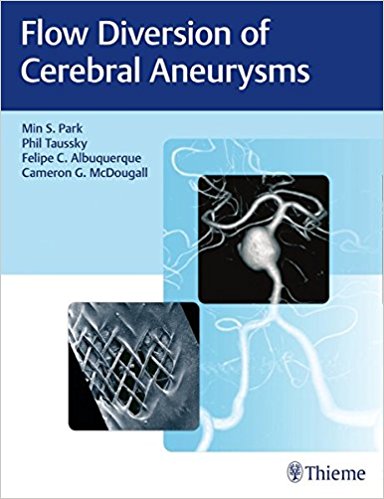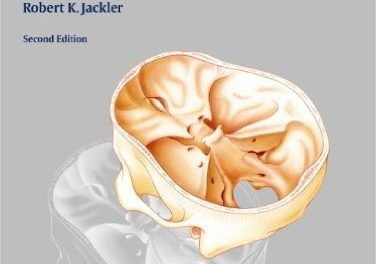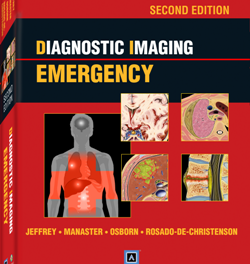 Editors: Min S. Park, MD; Philipp Taussky, MD; Felipe C. Albuquerque, MD; and Cameron G. McDougal, MD
Editors: Min S. Park, MD; Philipp Taussky, MD; Felipe C. Albuquerque, MD; and Cameron G. McDougal, MD
Publisher: Thieme – 156 pages, with 104 illustrations
Book Review by: Nano Khilnani
An aneurysm is a weak area in a blood vessel wall that causes the vessel to bulge or balloon out and sometimes burst. Aneurysms can develop within arteries or veins that carry blood throughout the circulatory system. For example an aortic aneurysm is one that develops in a blood vessel near the heart, and an abdominal aortic aneurysm (referred to sometimes as AAA) is a localized enlargement of the abdominal aorta.
This book is on cerebral aneurysms and their treatment, particularly through a process called flow diversion. Such aneurysms are called brain aneurysms or intracranial aneurysms. When an aneurysm (bulging or ballooning) develops within the blood vessel network of an individual, that person may experience symptoms such as confusion, disorientation, drowsiness, loss of consciousness. a sudden and unusually severe headache, vision impairment, vomiting, or other conditions.
Cerebral aneurysms are of various types. Several of the more well-known are: saccular aneurysms, fusiform aneurysms, and microaneurysms. Saccular aneurysms, also known as berry aneurysms, appear as a round out-pouching and are the most common form of cerebral aneurysms. Fusiform or dolichoectatic aneurysms represent a widening of a segment of an artery around the entire blood vessel, rather than just arising from a side of an artery’s wall. They can rupture but usually do not.
Microaneurysms, also known as Charcot-Bouchard aneurysms, typically occur in small blood vessels (less than 300 micrometers in diameter), most often the lenticulostriate vessels of the basal ganglia, and are associated with chronic hypertension. Charcot–Bouchard aneurysms are a common cause of intracranial hemorrhage.
Intracranial aneurysms may be caused by genetic factors (e.g. an arteriovenous malformation), some diseases acquired in the course of life, and are related to unhealthy lifestyle choices such as alcoholism, smoking, and a stressful life that leads to hypertension.
Fifty-six brain and nerve specialists – mainly neurologists, neuroradiologists, and neurosurgeons – authored the 21 chapters of this text that deals with diagnosing and treating cerebral aneurysms.
We list the chapter titles below to provide you an overview of the techniques of flow diversion of cerebral aneurysms. (Of particular note is chapter 9). The authors of the chapters are all based in the United States, except three from Israel.
- The Beginnings of Flow Diversion: A Historical Review
- Theoretical Basis of Flow Diversion
- Review of Current Literature and Occlusion Results
- Coil Embolization Versus Flow Diversion
- On-Label Use (Illustrative Cases)
- Off-Label Use
- Flow Diversion in Ruptured Aneurysms
- Pharmacology for Flow Diversion
- Overview of Current Flow-Diverting Devices
- Techniques and Nuances of Pipeline Deployment
- Technique and Nuances of Silk Development (Balt Extrusion)
- Technique and Nuances of Surpass Streamline Flow Diverter
- Technique and Nuances of Development of the Flow Re-Direction Endoluminal Device
- Adjuvant Techniques to Improve Flow Diversion
- Flow Diverters for Brain Aneurysm Treatment: Intraprocedural Complications and Management
- Post-procedural Complications
- Flow Diversion Grading Scales
- Radiographic Imaging after Flow Diversion
- Management of Aneurysm Residuals Following Treatment with Flow Diverters
- Hemodynamic Modifications of Flow-Diverting Stents
- Future Developments and Research
Flow diversion is a method to divert the flow of blood away from that part of an artery or vein where an aneurysm (ballooning or bulging) has occurred. Before this treatment technique was developed, a process known as intrasaccular embolization was used, that utilized coils to block blood entry to the aneurysm, relieve the pressure on it, and prevent it from bursting. Another option was the use of detachable balloons.
“The advent of flow diversion…represents a paradigm shift in the treatment of cerebral aneurysms,” states Dr. Brian L. Hoh, who wrote the Foreword for this book. He is chief of cardiovascular surgery in the department of neurosurgery at the University of Florida in Gainesville.
The editors express their satisfaction in their Preface that the use of devices based flow diversion has, in a short period time, become “an accepted and required component to all of our practices and the raison d’etre for the existence of this book.”
Initially that was not the case, they point out: “While the first commercially available flow diverter in the United States was originally approved for only a small subset of cerebral aneurysms, recent experience has demonstrated its utility in treating a wider complement of aneurysms safely and efficaciously.”
This book is very informative and provides a lot of detail about intracranial (particularly cerebral) aneurysms, and the surgical options and techniques used in the past and in recent years to treat them. Flow-diversion is a relatively recent idea and result of innovative thinking, and the devices used now are likely to undergo improvement. The editors and authors deserve high praise in sharing their expert knowledge, experience, and insight.
Editors:
Min S. Park, MD is Director of the Endovascular Neurosurgery Fellowship and Associate Residency Program, and Director of the Department of Neurosurgery at the University of Utah Health in Salt Lake City, Utah.
Philipp Taussky, MD is Section Chief of Neurovascular Surgery, Associate Professor, and Chief Value Officer in the Department of Neurosurgery at the University of Utah Health in Salt Lake City, Utah.
Felipe C. Albuquerque, MD is Director of the Endovascular Neurosurgery Fellowship and Associate Residency Program, and Director of the Department of Neurosurgery at Barrow Neurological Institute at St. Joseph’s Hospital and Medical center in Phoenix, Arizona.
Cameron G. McDougal, MD, FRSC is Medical Director of Cerebrovascular Neurosurgery at Swedish Neuroscience Institute in Seattle, Washington.
A YouTube video demonstrating flow diversion in treating cerebral aneurysms at the Cleveland Clinic in Abu Dhabi as explained by Dr. Michel Mawad, an interventional neurosurgeon:







